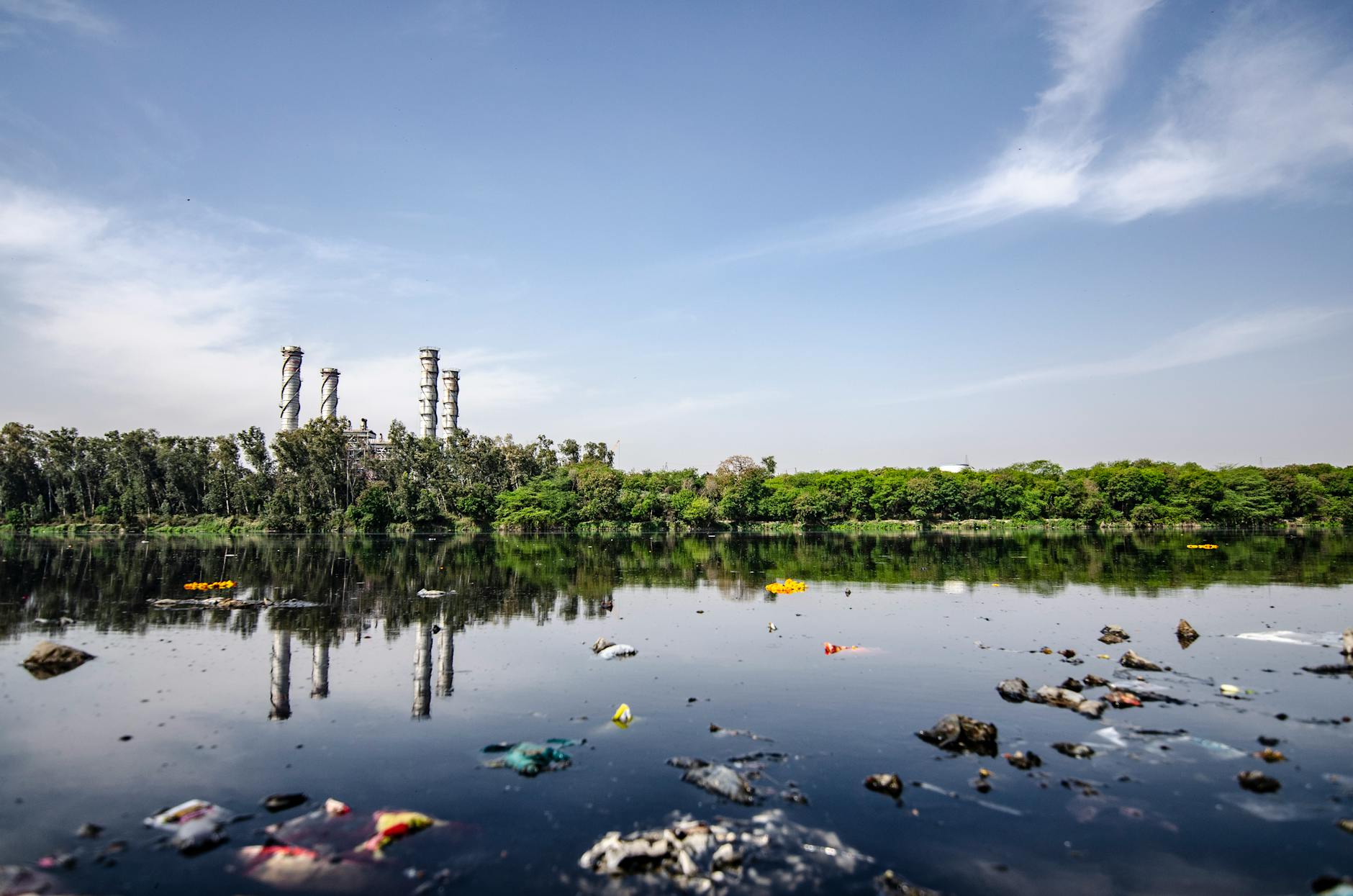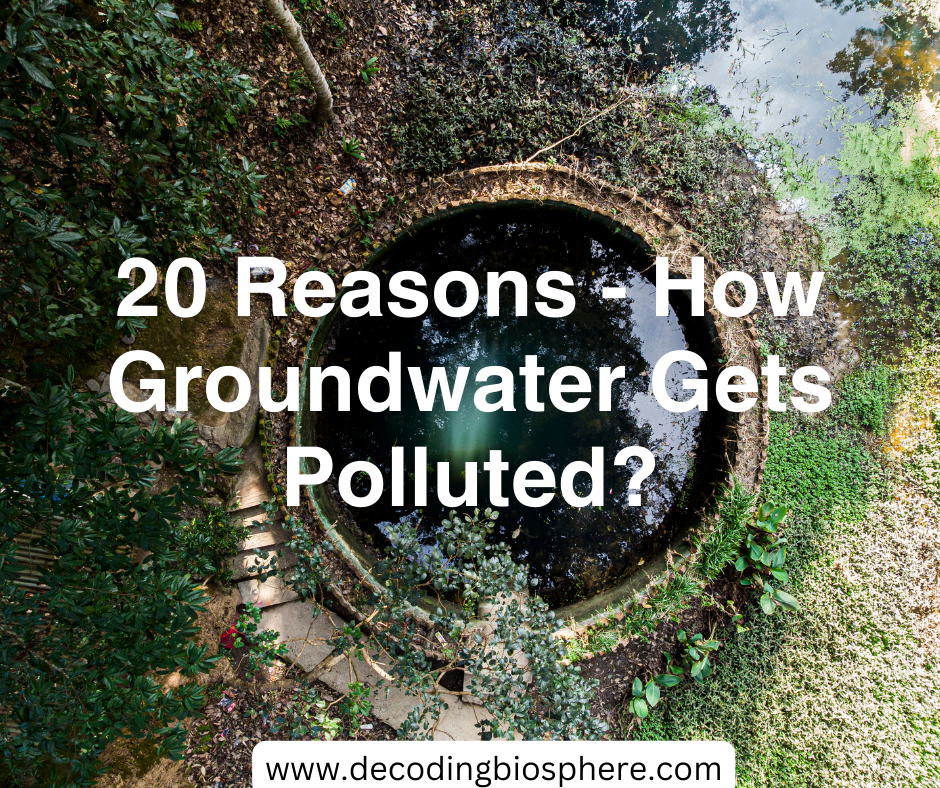Groundwater is a precious resource that provides drinking water to billions of people worldwide. However, it is vulnerable to pollution from various sources, which can jeopardize its quality and availability. In this article, we will explore 20 reasons why groundwater gets polluted, to understand the complex processes and human activities that contribute to this critical issue.
- Agricultural Runoff
One of the primary sources of groundwater pollution is agricultural runoff. When farmers apply fertilizers, pesticides, and herbicides to their crops, rainwater can wash these chemicals into the soil, where they can seep into the groundwater. This contamination can pose risks to human health and aquatic ecosystems.
- Industrial Discharges
Industries often release pollutants such as heavy metals, solvents, and toxic chemicals into the environment through their wastewater discharges. If these contaminants reach the groundwater, they can contaminate drinking water supplies and cause long-term environmental damage.

- Improper Waste Disposal
Improper disposal of waste, including household garbage, industrial waste, and hazardous materials, can lead to groundwater pollution. When waste is dumped in landfills or disposed of in open pits, contaminants can leach into the soil and eventually reach the groundwater, posing risks to public health and the environment.
- Leakage from Underground Storage Tanks
Underground storage tanks used to store fuels, oils, and chemicals are susceptible to corrosion and leakage over time. When these tanks leak, the contaminants can seep into the surrounding soil and groundwater, contaminating drinking water supplies and causing environmental harm.
- Septic Systems
Improperly maintained septic systems can be a significant source of groundwater pollution. When septic tanks overflow or leach fields become saturated, untreated sewage can seep into the groundwater, carrying pathogens, nutrients, and other contaminants with it.
- Landfill Leachate
Landfills are designed to contain waste and prevent contamination of the surrounding environment. However, rainwater percolating through landfills can pick up pollutants from decomposing waste, forming a toxic liquid known as leachate. If not properly managed, leachate can migrate into the groundwater, polluting drinking water supplies and ecosystems.
- Mining Activities
Mining operations can release a variety of pollutants into the environment, including heavy metals, acids, and chemicals. When these contaminants come into contact with water, they can leach into the soil and groundwater, posing risks to human health and aquatic life.
- Hydraulic Fracturing (Fracking)
Hydraulic fracturing, or fracking, is a process used to extract oil and natural gas from underground rock formations. Fracking involves injecting large volumes of water, sand, and chemicals into the ground at high pressure to fracture the rock and release the trapped hydrocarbons. However, this process can contaminate groundwater with chemicals used in the fracking fluid and naturally occurring substances from the rock formations.
- Land Application of Wastewater
In some areas, treated wastewater is applied to land for irrigation or disposal purposes. While this practice can be a beneficial way to recycle water and replenish groundwater supplies, it can also introduce contaminants such as nutrients, pathogens, and pharmaceuticals into the soil and groundwater if not properly managed.
- Saltwater Intrusion
Saltwater intrusion occurs when saline water from oceans or seas infiltrates freshwater aquifers, contaminating groundwater supplies. This phenomenon can be exacerbated by over-pumping of groundwater, sea-level rise, and coastal development, leading to degradation of drinking water quality and loss of freshwater resources.
- Road Salt
During winter months, road crews often use salt and other de-icing chemicals to melt snow and ice on roads and highways. When these chemicals are applied to roads, they can be washed into nearby water bodies, where they can infiltrate the soil and groundwater, increasing salinity levels and harming aquatic ecosystems.
- Agricultural Livestock Operations
Large-scale livestock operations, such as concentrated animal feeding operations (CAFOs), can generate significant amounts of manure, urine, and other waste products. When these waste products are improperly managed or stored, they can leach nutrients, pathogens, and antibiotics into the soil and groundwater, posing risks to human health and the environment.
- Failing Infrastructure
Aging infrastructure, including water supply systems, wastewater treatment plants, and underground pipes, can contribute to groundwater pollution through leaks, breaks, and spills. If not properly maintained and repaired, failing infrastructure can allow contaminants to enter the groundwater, compromising drinking water quality and public health.
- Abandoned Wells
Abandoned wells that are not properly sealed or plugged can provide a direct pathway for contaminants to enter the groundwater. Chemicals, bacteria, and other pollutants can easily infiltrate abandoned wells and migrate into the surrounding aquifer, contaminating drinking water supplies and posing risks to human health.
- Illegal Dumping
Illegal dumping of waste, including household trash, construction debris, and hazardous materials, can occur in remote areas or on private property without proper oversight or regulation. When waste is illegally dumped, contaminants can leach into the soil and groundwater, polluting drinking water supplies and harming the environment.
- Urbanization
Urbanization and urban development can increase the risk of groundwater pollution through the expansion of impervious surfaces, such as roads, parking lots, and buildings, which can prevent rainwater from infiltrating into the soil and recharge groundwater supplies. Additionally, urban runoff can carry pollutants such as oil, grease, and heavy metals into stormwater drains, where they can enter the groundwater untreated.
- Household Chemicals
Household chemicals, including cleaners, paints, solvents, and pesticides, can pose risks to groundwater quality if not properly stored, used, or disposed of. Spills, leaks, and improper disposal of these chemicals can allow contaminants to seep into the soil and groundwater, contaminating drinking water supplies and posing risks to public health.
- Land Use Changes
Changes in land use, such as deforestation, urbanization, and agricultural expansion, can alter the natural hydrological cycle and increase the risk of groundwater pollution. Clearing forests, draining wetlands, and converting natural landscapes to developed or agricultural areas can disrupt the balance of water infiltration, runoff, and recharge, leading to changes in groundwater levels and quality.
- Climate Change
Climate change can exacerbate groundwater pollution through its effects on precipitation patterns, temperature regimes, and sea-level rise. Changes in precipitation intensity and frequency can increase the transport of pollutants from the land surface to groundwater, while rising temperatures can accelerate the degradation of organic matter and the release of contaminants from soil and sediment. Additionally, sea-level rise can lead to saltwater intrusion and the contamination of coastal aquifers, further compromising groundwater quality.
- Lack of Regulation and Enforcement
Finally, a lack of regulation and enforcement of environmental laws and policies can contribute to groundwater pollution by allowing polluters to operate with impunity and disregard for the consequences of their actions. Weak regulatory frameworks, inadequate monitoring and enforcement mechanisms, and limited public oversight can create opportunities for pollution to occur and go unchecked, undermining efforts to protect groundwater resources and public health.
Conclusion
In conclusion, groundwater pollution is a complex and multifaceted problem that arises from a combination of natural processes and human activities. From agricultural runoff to industrial discharges, improper waste disposal to failing infrastructure, there are numerous sources and pathways through which contaminants can enter the groundwater and degrade its quality.
Addressing groundwater pollution requires a comprehensive approach that involves understanding the sources, pathways, and impacts of contamination, as well as implementing effective prevention, monitoring, and remediation measures.
You May Also Like

